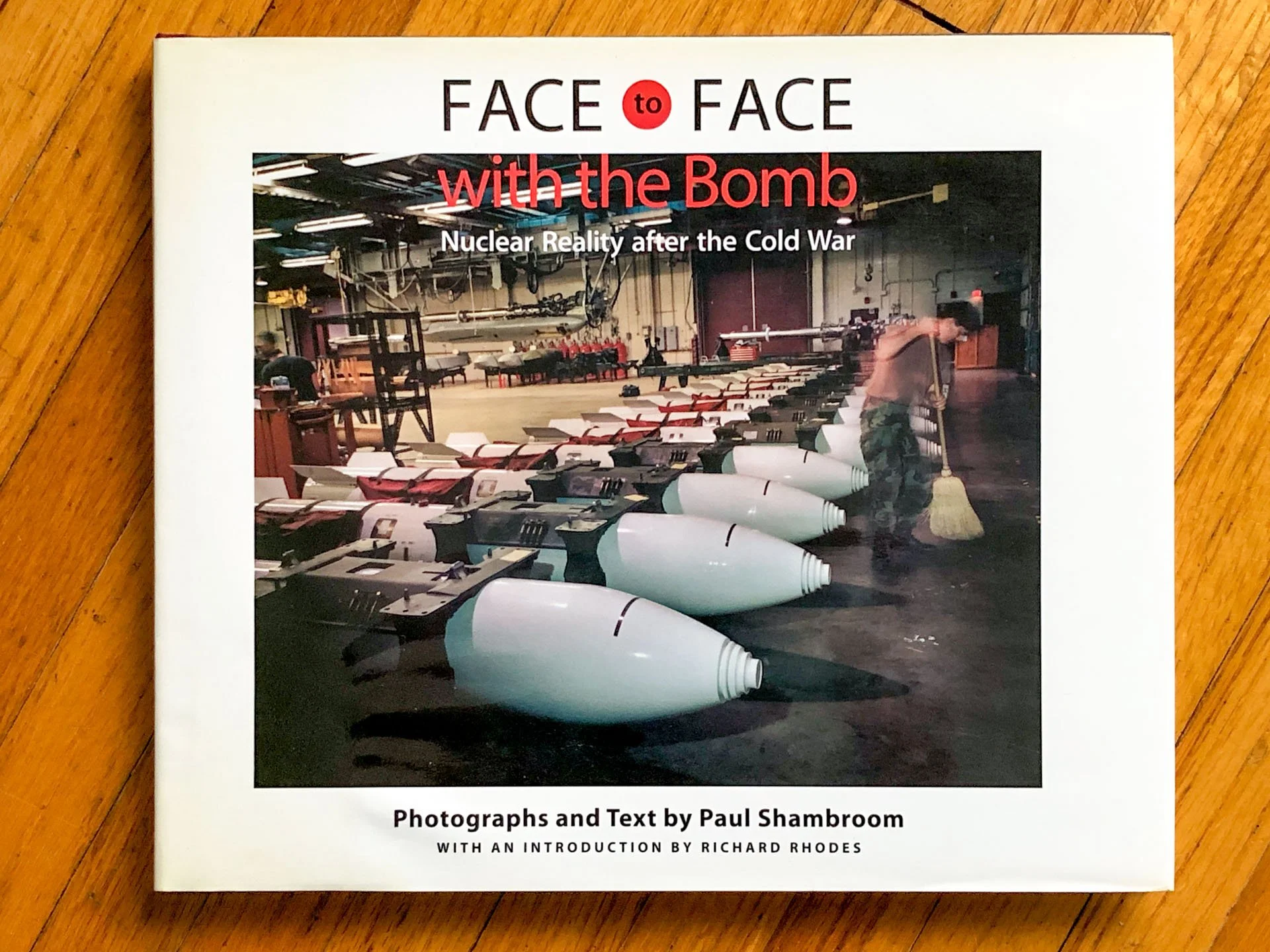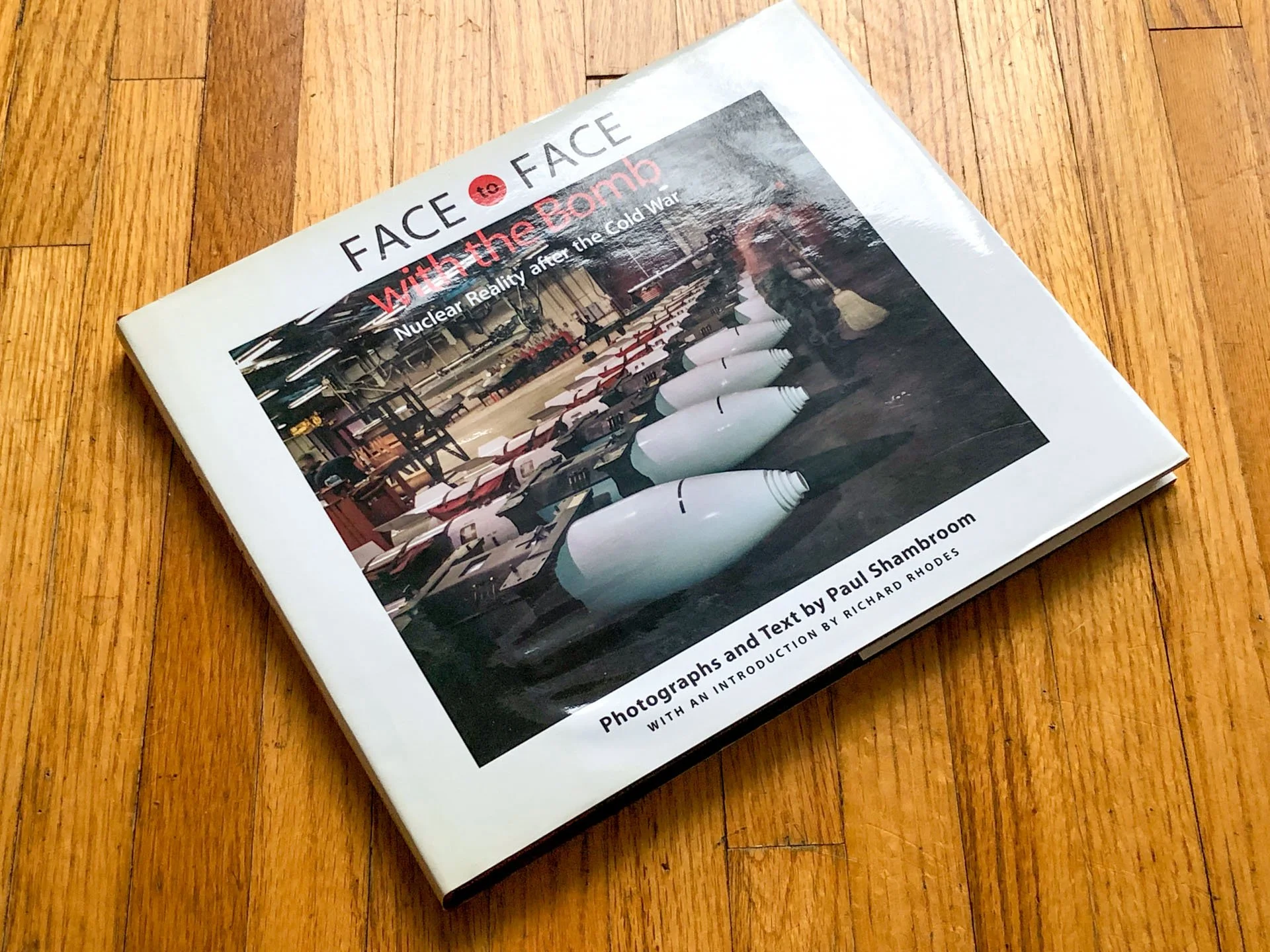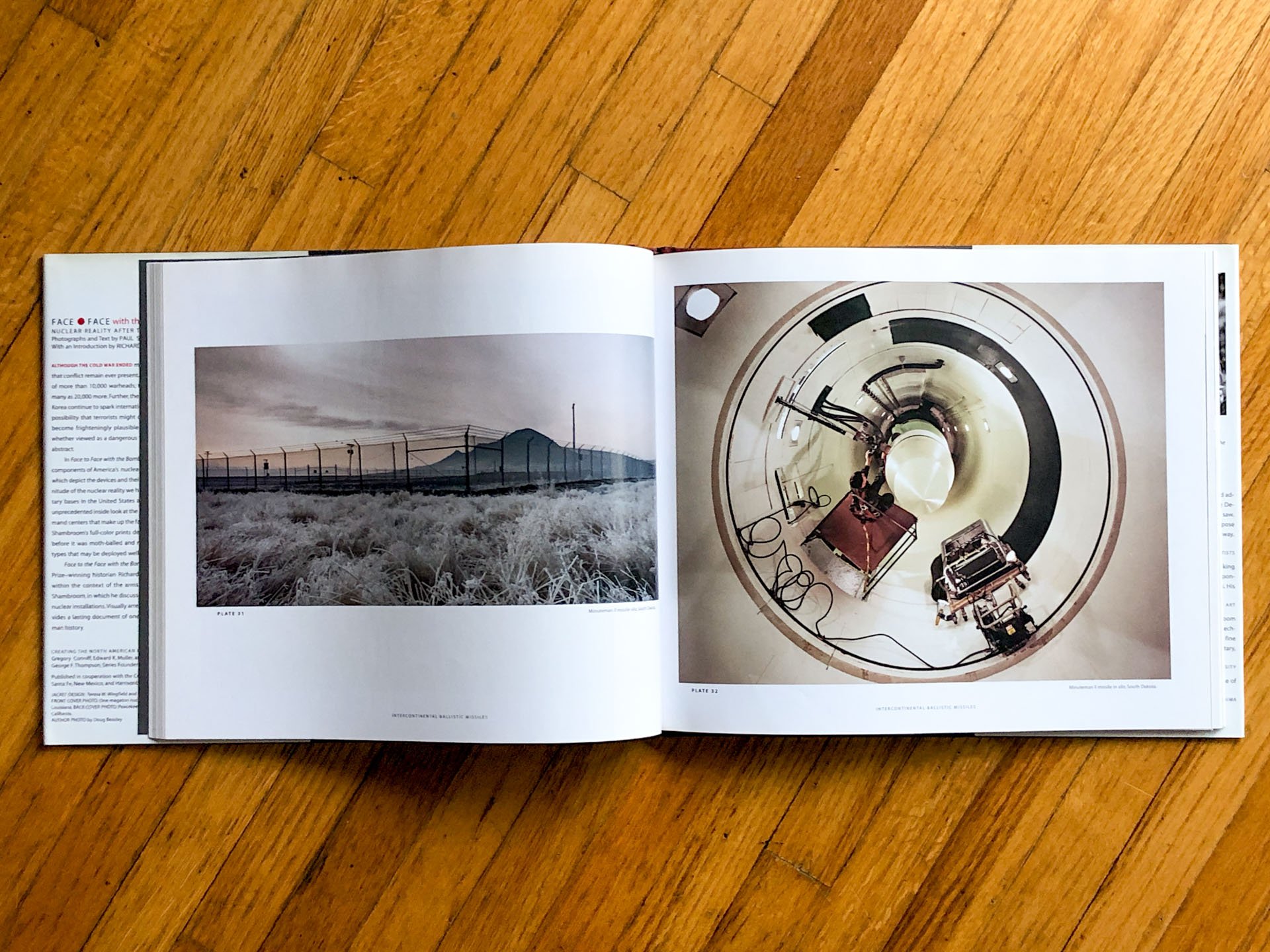Face to Face With the Bomb: Nuclear Reality After the Cold War (2003, new copy, signed, out-of-print very limited quantity)
Face to Face With the Bomb: Nuclear Reality After the Cold War (2003, new copy, signed, out-of-print very limited quantity)
Johns Hopkins University Press (Baltimore), 2003, 144 pages, 11.75 x 0.6. With an introduction by Richard Rhodes.
"Here in Paul Shambroom's remarkable photographs are the machines we have built at great expense to destroy millions of human lives... and the men and women whose professional duty it is to maintain them until we learn the deep lesson that the discovery of how to release nuclear energy revealed a natural limit to the scale of human conflict." -- from the Introduction by Richard Rhodes
In Face to Face with the Bomb, photographer Paul Shambroom documents the components of America's nuclear arsenal, and through his series of striking images which depict the devices and their day-to-day maintenance, he the makes clear the magnitude of the nuclear reality we have created. Taken between 1992 and 2001 at military bases in the United States and the South Pacific, these photographs offer an unprecedented inside look at the missiles, warheads, bombers, submarines, and command centers that make up the far-flung nuclear infrastructure of the United States.
“WHAT DO- WEAPONS of mass destruction look like? Until Paul Shambroom published the remarkable photographs gathered in his new book "Face to Face with the Bomb: Nuclear Reality after the Cold War" (Johns Hopkins), those of us not personally connected with their manufacture, storage, and maintenance could only speculate on the basis of such antique models as "Fat Man" and "Little Boy;' the bombs that eradicated Hiroshima in 1945….. By his own account, all Shambroom had to do to get access to bombs, ICBMs, and nuclear submarines was to give his Social Security number and state that he was an American citizen, and then engage in endless negotiations concerning each and every site. His task was not easy, but neither was it impossible. From 1992 to 2001, he visited 34 active weapons sites from Georgia to Wyoming to the South Pacific.” -Luc Sante, Boston Globe


